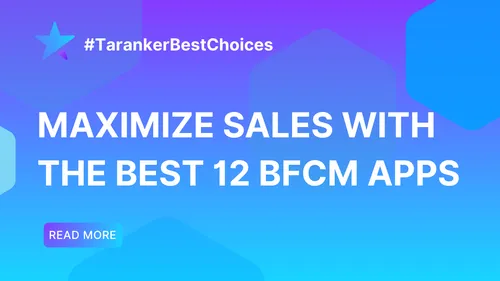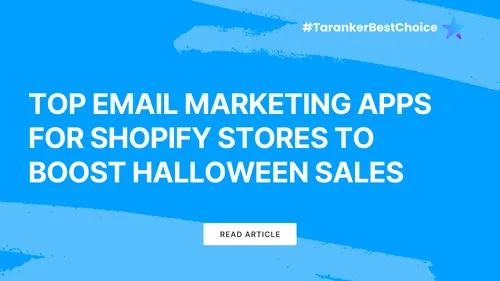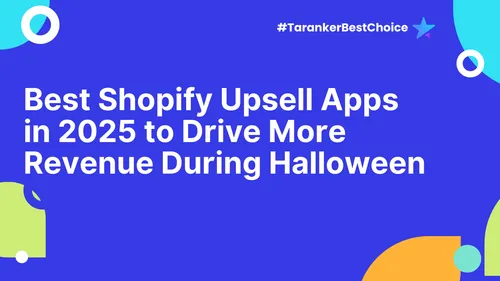Introduction
Success in eCommerce is no longer just about having a great product—it’s about understanding the data behind your business. According to a study by McKinsey, companies that embrace data-driven decision-making see a 19% increase in profitability and a 10% improvement in operational efficiency.
Yet, many Shopify store owners struggle to translate their metrics into meaningful action. Are you tracking the right data points? Are you making strategic decisions based on customer behavior, marketing effectiveness, and operational efficiency?
In this guide, we’ll break down the essential metrics that every Shopify business should track, explain how to leverage them effectively, and provide actionable insights to optimize sales, marketing, and operations.
By the end of this article, you’ll not only understand which metrics truly matter but also how to use them to scale your business efficiently and profitably.

1. Unlocking Growth: Using Data to Scale Your Shopify Store
Why Embracing Data Leads to Business Success
Growing a Shopify store without leveraging data is like trying to build a house without a blueprint. Many store owners rely on intuition rather than measurable insights, which leads to inefficiencies, missed opportunities, and unoptimized strategies. By analyzing data, businesses can pinpoint trends, refine marketing tactics, and enhance operational efficiency, ultimately driving higher profitability and sustained growth.
The Strategic Importance of Metrics and KPIs
Metrics serve as general performance indicators, offering a broad view of different aspects of a business, such as traffic, sales, or engagement. KPIs (Key Performance Indicators), however, are specific, goal-oriented metrics that directly contribute to business objectives. Every KPI is a metric, but not every metric qualifies as a KPI. For example, monitoring website traffic is useful, but tracking the conversion rate provides direct insight into revenue-driving performance.
2. Essential Shopify Metrics Every Store Owner Should Track
A. Sales and Revenue Metrics
Total Sales Revenue reflects overall business performance and revenue growth, helping store owners understand if their business is expanding or stagnating. Average Order Value (AOV) shows how much customers spend per order, guiding upselling and bundling strategies to increase revenue per transaction. Conversion Rate measures the effectiveness of a store in turning visitors into buyers, a crucial indicator of website optimization and user experience.
Example: A Shopify store owner noticed their AOV was $40, while competitors averaged $60. By introducing product bundles and volume discounts, they increased their AOV by 30% within two months.
B. Customer Behavior Metrics
Customer Retention Rate tracks how many customers return for repeat purchases, providing insights into brand loyalty and customer satisfaction. Cart Abandonment Rate reveals the percentage of visitors who add products to their cart but don’t complete their purchases, signaling potential friction in the checkout process. Customer Lifetime Value (CLV) calculates the total revenue a customer generates throughout their relationship with a store, helping merchants determine the effectiveness of retention strategies.
Case Study: A skincare brand found that their CLV was lower than expected. After analyzing customer behavior, they introduced a loyalty program that increased repeat purchases by 25%.

C. Marketing and Traffic Metrics
Website Traffic Sources reveal which channels (organic search, social media, paid ads) drive the most visitors, allowing businesses to allocate marketing budgets effectively. Click-through Rate (CTR) measures how well ads and email campaigns engage users and drive them to take action. Cost per Acquisition (CPA) calculates how much is spent to acquire a new customer, ensuring marketing campaigns remain cost-effective.
Pro Tip: If your CPA is rising while conversion rates drop, it may be time to re-evaluate your ad targeting or optimize landing pages.
D. Inventory and Fulfillment Metrics
Stock Turnover Rate helps businesses optimize inventory by tracking how fast products are selling, reducing overstock and deadstock issues. Order Fulfillment Time assesses how quickly orders are processed and shipped, directly impacting customer satisfaction and repeat purchases.
Example: A fashion store reduced order fulfillment time by implementing automated workflows, leading to a 15% increase in positive customer reviews.
3. Turning Data into Actionable Strategies
A. Using Metrics to Optimize Sales and Conversions
Tracking sales data allows Shopify store owners to pinpoint their best-selling products. By understanding which products perform well, businesses can allocate more marketing budget toward high-performing items, boosting overall profitability. Additionally, reducing cart abandonment is critical. Analyzing where customers drop off in the checkout process can help identify friction points. Providing incentives like free shipping, limited-time discounts, or a simplified checkout experience can significantly increase conversion rates.
B. Leveraging Data for Customer Retention
Customer Lifetime Value (CLV) helps businesses determine the long-term worth of a customer. By segmenting customers based on their purchasing history, businesses can create personalized email campaigns and exclusive discounts for high-value customers. Another effective strategy is implementing a loyalty rewards program, encouraging repeat purchases by offering points, tiered discounts, or special access to new products. Data-driven retention strategies improve brand loyalty and increase overall revenue.
C. Improving Marketing ROI with Data-Driven Insights
Maximizing return on investment (ROI) in marketing requires identifying the most effective channels. Shopify store owners should track traffic sources and conversion rates to understand which marketing strategies yield the highest engagement. Running A/B tests on different ad creatives, email subject lines, and landing pages helps businesses refine their campaigns based on actual customer preferences. By continuously monitoring these insights, businesses can optimize ad spend and ensure higher conversions with lower acquisition costs.
D. Enhancing Operational Efficiency with Metrics
Operational efficiency is crucial for maintaining a seamless shopping experience. By tracking stock turnover rates, businesses can forecast demand and prevent overstocking or stockouts. Fast fulfillment times also contribute to higher customer satisfaction. Leveraging automation tools for order processing and shipping can reduce errors, speed up deliveries, and enhance customer experience. Data-driven decision-making in operations ensures that businesses remain agile and responsive to customer needs.

4. Real-World Example: How a Shopify Store Scaled Using Data-Driven Decisions
A Shopify store specializing in sustainable fashion noticed that despite high website traffic, their conversion rates remained significantly low. To uncover the root cause, they turned to data analytics tools like Shopify Analytics and Google Analytics to examine customer behavior. Through heatmaps and user session recordings, they discovered that a majority of their customers were abandoning their carts due to unexpectedly long shipping times.
Step-by-Step Process They Implemented:
-
Identifying the Problem:
-
Used analytics tools to track cart abandonment patterns.
-
Reviewed customer complaints and support tickets regarding delayed shipping.
-
Conducted exit surveys to collect feedback from users who abandoned their carts.
-
Finding the Right Solution:
-
Partnered with a faster logistics provider that could meet their delivery speed expectations.
-
Negotiated bulk shipping discounts to keep costs manageable.
-
Implementing Changes:
-
Updated product pages to display estimated delivery times based on customer location.
-
Sent automated emails notifying customers of expedited shipping options.
-
Added a shipping countdown timer on checkout pages to create urgency and confidence in delivery times.
Results:
-
Conversion rates increased by 18% in just three months.
-
Customer satisfaction scores improved as delivery times became more predictable.
-
Return customer rate increased by 12% due to a better post-purchase experience.
This case study showcases how Shopify store owners can use data-driven insights to identify bottlenecks, implement targeted solutions, and ultimately enhance customer experience for sustainable growth.
Conclusion:
Data is not just a tool—it is the foundation for sustainable growth in any Shopify business. The ability to measure, analyze, and act on key metrics is what separates thriving stores from those struggling to scale. By identifying the right data points, optimizing marketing efforts, enhancing customer retention, and improving operational efficiency, store owners can turn raw numbers into actionable strategies.
Whether it’s refining your pricing model, personalizing your customer experience, or streamlining your fulfillment process, every decision should be backed by data. Success in eCommerce is not about intuition; it’s about using measurable insights to drive smarter, faster, and more effective business decisions.













